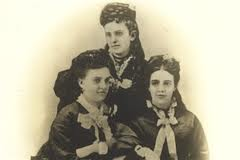January 13, 2013 marks the 100th birthday of Delta Sigma Theta Sorority. To commemorate the occasion, the sorority celebrated with a float entered in the New Year’s Day Tournament of Roses Parade. The theme of the float was “Transforming Communities through Sisterhood and Service.” Delta Sigma Theta was the first African-American women’s organization and the first National Pan-Hellenic Council Greek-letter organization to sponsor a float in the parade. The National President, Cynthia M. A. Butler-McIntyre, and Past Presidents as well as the Executive Board, rode on the float. Marching alongside it were 122 Deltas wearing red and white, 100 marking each year of public service and 22 in honor of the founders.
Delta Sigma Theta was founded at Howard University by 22 collegians – Winona Cargile Alexander, Madree Penn White, Wertie Blackwell Weaver, Vashti Turley Murphy, Ethel Cuff Black, Frederica Chase Dodd, Osceola Macarthy Adams, Pauline Oberdorfer Minor, Edna Brown Coleman, Edith Mott Young, Marguerite Young Alexander, Naomi Sewell Richardson, Eliza P. Shippen, Zephyr Chisom Carter, Myra Davis Hemmings, Mamie Reddy Rose, Bertha Pitts Campbell, Florence Letcher Toms, Olive Jones, Jessie McGuire Dent, Jimmie Bugg Middleton, and Ethel Carr Watson.
Nearly two months later, on March 3, 1913, the women took part in the historic suffrage march in Washington, D.C. They were the only African-American women’s group to participate. Honorary member Mary Church Terrell joined them in their march.
In 1923, at the fifth national convention, Mary McLeod Bethune, a prominent educator, became an Honorary member of Delta Sigma Theta.
The daughter of former slaves, Bethune worked in the fields at age five. Due to the generosity of a benefactor, she graduated from Scotia Seminary (now Barber-Scotia College). Bethune-Cookman University in Daytona Beach, Florida can trace its history to 1904, when Bethune opened a school for African-American girls. There were five girls in the first class. In 1923, the school merged with the Cookman Institute of Jacksonville, Florida to become a high school. In 1931, it became a junior college. Ten years later Bethune-Cookman became a four-year college. Bethune served as the college president from 1923-42 and 1946-47. She was also a leader in the National Association of Colored Women and served as its national president. In addition, she founded the National Council of Negro Women and served as a Cabinet member in Franklin Delano Roosevelt’s administration. Her push to upgrade the libraries at historically black institutions during her tenure as Director of the Negro Division of the National Youth Administration, and her firm belief that these libraries needed to be improved, played a part in Delta’s first national project. She died in 1955. In 1993, Bethune was inducted posthumously into the National Women’s Hall of Fame.

Mary McLeod Bethune and some of her students during the early years of her school. Photo courtesy of Bethune-Cookman University.
© Fran Becque, www.fraternityhistory.com, 2014. All Rights Reserved. If you enjoyed this post, please sign up for updates. Also follow me on twitter @GLOHistory and Pinterest www.pinterest.com/glohistory/















